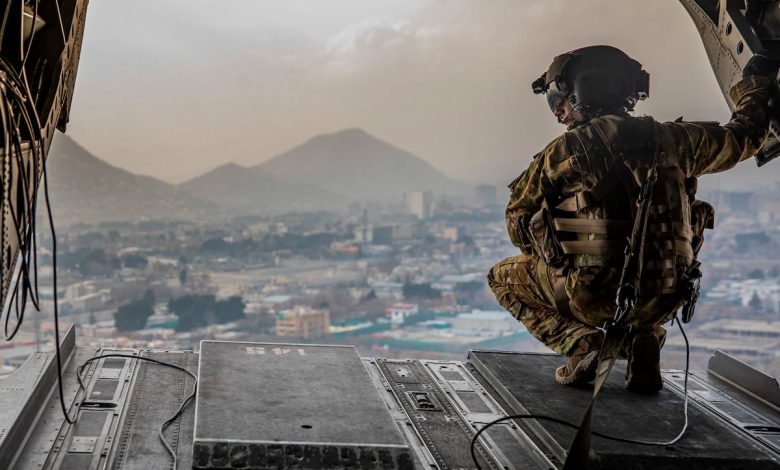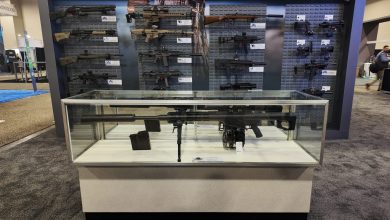Why troops in combat jobs should get higher danger pay than others

New directives for military compensation and special pays are set to be released in January 2025 as part of the Quadrennial Review of Military Compensation, or QRMC.
As a component of the review, the Pentagon is considering adjusting the way Hostile Fire and Imminent Danger pay is allocated across the armed forces.
This review raises the more fundamental issue of whether military personnel are being adequately compensated for the fatality risk they assume in combat zones. If not, how should the Pentagon adjust compensation to more accurately reflect these risks?
The current policy provides a uniform danger pay premium of $225 per month to military personnel deployed into areas designated as a combat zone. This rate has been the same since 2003 because it is not indexed to inflation.
In addition to danger pay, soldiers are entitled to a special tax benefit known as the Combat Zone Tax Exclusion, or CZTE. This benefit exempts military personnel from paying income tax on any income earned while in a combat zone.
Notably, previous research has shown the CZTE costs the U.S. government approximately 4.5 times more than regular danger pay. Because the current danger pay system is tied more to the person’s income than the level of risk exposure, the major beneficiaries of the current system are high-ranking officers, who reap the preponderance of the tax benefits.
But high-ranking officers do not bear a disproportionate share of risk. The data indicates enlisted personnel have higher fatality rates in comparison to officers.
For reference, throughout the conflicts in Afghanistan and Iraq from 2001 to 2021, enlisted personnel, who represent 82% of the total active duty force, accounted for 90% of all fatalities.
And the distribution of fatalities becomes even more skewed at the lower ranks. For example, the ranks of E-5 — equivalent to sergeant — and below account for 72% of the fatalities while representing 59% of the total force.
The main takeaway from the data is that fatality risks are much higher for junior personnel compared to high-ranking officers, who secure the lion’s share of financial benefits under current compensation policy.
This is in direct contrast to guidance provided in the economics literature and government practices, which indicate that valuations should be based on the level of the risk, not the person’s income.
There are also widespread differences in fatality risks across job types. Previous research has shown the average fatality rate for all military personnel increases by 45 per 100,000 when they are deployed into combat zones in comparison to stateside personnel. For reference, the yearly fatality rate for typical workers in the U.S. is around 3 per 100,000.
This number increases dramatically, however, for certain high-risk jobs, such as infantry and special forces operators — commonly grouped together and known as “combat” job specialties. Compared to stateside troops, military personnel in combat jobs increase their fatality rate by 181 per 100,000 when deployed into combat zones.
Most troops, therefore, see an increase in a probability of death, though there are major differences depending upon military occupational specialties.
These distinctly different outcomes should prompt us to compensate military personnel accordingly. Calculating the appropriate compensation levels can be addressed by utilizing estimates from the value of a statistical life, or VSL, literature.
The basic concept of the VSL is grounded in the idea that individuals often make every day tradeoffs between wealth or income and fatality risks. For example, people are generally willing to pay more for safer vehicles or higher quality medical care. Likewise, workers often demand higher salaries in riskier professions, ceteris paribus.
The most up-to-date estimates indicate an average American is willing to pay roughly $130 for every 1 per 100,000 reductions in fatality risk. Dividing the willingness-to-pay estimate by the reduction in fatality risk leads to an approximate value of $13 million per statistical life. This is the value that economists use in benefit-cost analyses for government programs intended to save lives or compensate fatality risk levels.
In the case of military personnel, analysts can combine the increased fatality risk levels for deployment into combat zones with standard VSL estimates to more precisely set appropriate danger pay rates.
Using this method, the most recent estimates suggest the average military danger pay should be $1,056 per month (in 2024 dollars). For combat job types with higher fatality risk, this amount balloons to $4,245 per month.
We have several policy recommendations for more accurately adjusting the current danger pay system. First, we should eliminate the CZTE and reallocate those cost savings to alternative pay methods. The primary reason is that the CZTE is not directly related to fatality risk, but rather correlates with higher ranks or income for military personnel.
Next, we recommend reallocating CZTE funds to increase the current danger pay of $225 per month to $1,056 per month for all military personnel. This amount should be tax exempt and indexed to inflation.
Finally, we recommend providing a new “extreme” danger pay category to military personnel who serve in high-risk occupations. The extreme danger pay category should be allocated primarily to infantry soldiers and special forces operators and set at $4,245 per month.
We realize these recommendations and adjustments to danger pay do not come without tradeoffs. The reallocation of funds would mean high-ranking officers in lower risk job types would essentially be taking a pay cut when compared to the current compensation system.
In contrast, low-ranking enlisted personnel in high-risk job types would receive a pay increase. We believe this adjustment is justified based upon the fatality risks seen in the most recent conflicts and the types of personnel taking on those risks.
Given new pay directives in the QRMC are set to be released early next year, the time to act is now.
Thomas J. Kniesner received a PhD degree in economics from The Ohio State University. He is a research fellow at IZA and Krisher Professor of Economics Emeritus at Syracuse University, where he served as chair of the Department of Economics. In 2013 Kniesner joined the faculty of Claremont Graduate University, where he has been university professor, senior research fellow, and chair of the Department of Economic Sciences.
Ryan Sullivan received a PhD in Economics from Syracuse University. He is an associate professor at the Naval Postgraduate School, where he has taught a variety of topics related to cost-benefit and cost-effectiveness analysis, marginal reasoning, budgeting, finance, and labor economics. He served as a soldier in the U.S. Army National Guard from 1998 to 2006.
W. Kip Viscusi is Vanderbilt’s first university distinguished professor, with tenured appointments in the Department of Economics, the Owen Graduate School of Management and the Law School. Viscusi was previously the Cogan Professor of Law and Economics and director of the Program on Empirical Studies at Harvard Law School. He has also been the Allen Professor of Economics at Duke University and professor of economics at Northwestern University.
Read the full article here






